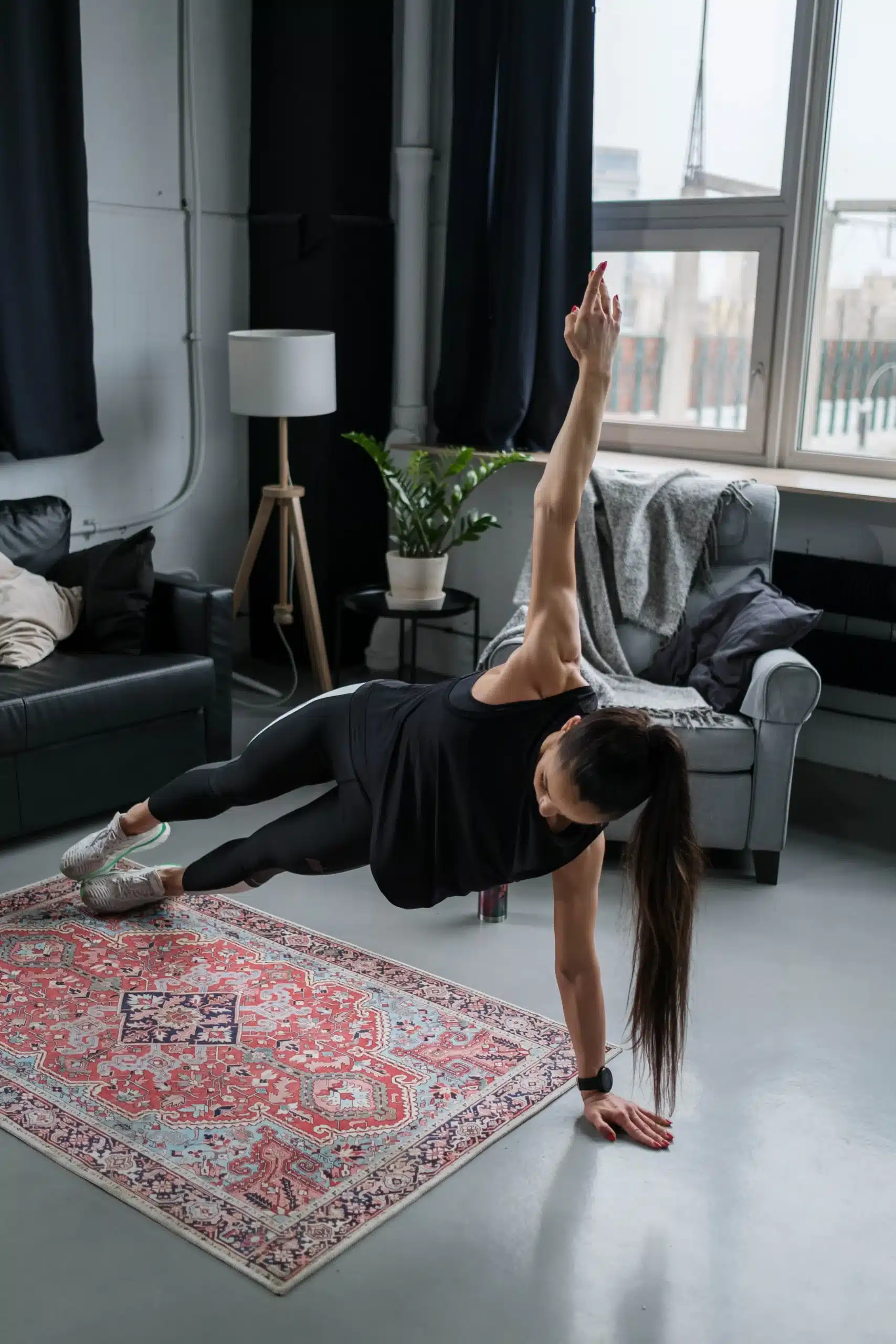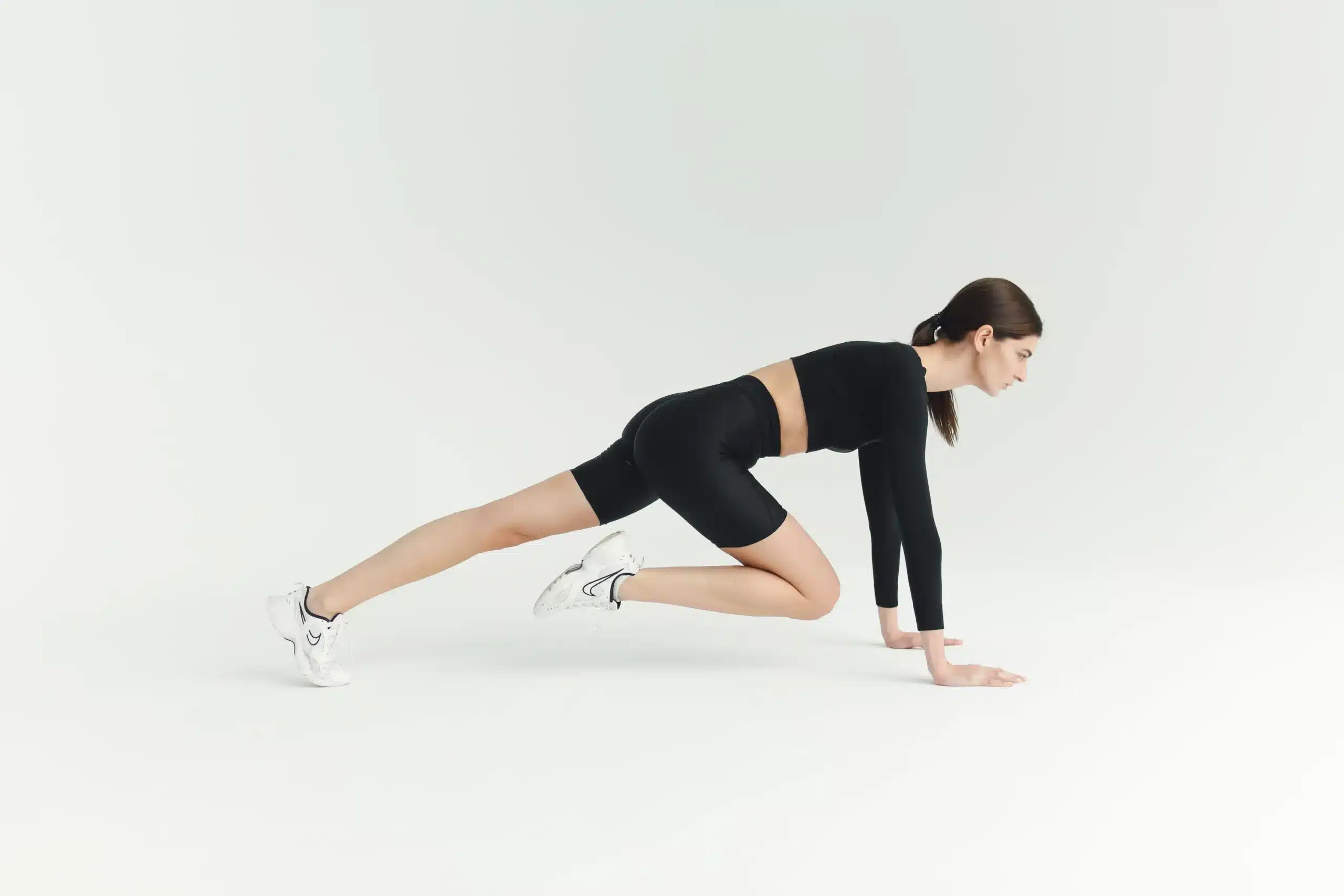Core Workouts for Triathletes Besides Situps
In this article, we’ll explore the significance of core workouts for triathletes, highlighting the benefits beyond just building abdominal muscles. Additionally, we’ll provide a list of eight effective core workouts and different ways to engage your core, ensuring a well-rounded understanding of how to strengthen this vital area without relying on situps.
Do Core Exercises Build Endurance?
Before going into specific workouts, it’s crucial to understand how core exercises contribute to a triathlete’s overall performance. The core serves as the powerhouse for athletes, connecting the upper and lower body and providing stability during various movements.
Enhanced Posture
A strong core promotes proper posture, which is essential for efficient movement during swimming, cycling, and running.
Improved Balance
Triathletes navigate through different terrains and movements. A stable core enhances balance, reducing the risk of falls or injuries during the race.
Optimized Breathing
Efficient breathing is crucial in endurance sports. A strong core allows for better control of the diaphragm, facilitating optimal respiratory function.
Power Transfer
The core acts as a bridge between the upper and lower body, facilitating the transfer of power. This is particularly beneficial during activities like pedaling on the bike or pushing through a running stride.
Start Doing These 8 Core Workouts
Now, let’s explore eight core workouts. These exercises target various muscle groups within the core, ensuring a well-rounded routine for strength training for triathletes.
Plank

The plank is a fundamental exercise that engages multiple core muscles simultaneously.
Target Muscle Groups
Abs: The front muscles that create a flat stomach.
Obliques: The muscles on your sides, helping with twists and turns.
Serratus: Muscles under your armpits, supporting shoulder movement.
How to do it
- Start in a push-up position with your arms straight.
- Lower your forearms to the ground, maintaining a straight line from head to heels.
- Hold the position, keeping your core tight and body straight.
- Aim for 30 seconds to start and gradually increase the duration as your strength improves.
Russian Twists
This exercise targets the obliques, essential for rotational stability.
Target Muscle Groups
Obliques: These muscles help with rotational stability.
Abs: Engaged as you twist from side to side.
How to do it
- Sit on the ground with your knees bent and feet flat.
- Lean back slightly, maintaining a straight spine.
- Clasp your hands together and twist your torso to one side.
- Return to the center and twist to the other side.
- Repeat, gradually increasing the speed as you become more comfortable with the movement.
Bicycle Crunches

This dynamic exercise engages the entire core, incorporating both upper and lower abdominals.
Target Muscle Groups
Abs: Both upper and lower parts.
Obliques: Engaged during the twisting motion.
How to do it
- Lie on your back with hands behind your head.
- Lift your legs off the ground, and bring one knee towards your chest while simultaneously twisting your torso to bring the opposite elbow towards the lifted knee.
- Repeat on the other side in a pedaling motion.
Side Plank

This variation of the plank targets the obliques and lateral muscles, crucial for stability during side-to-side movements.
Target Muscle Groups
Obliques: Especially the side facing up.
Transverse Abdominis: Deep muscles supporting your core.
How to do it
- Start in a plank position.
- Rotate your body to one side, lifting one arm towards the ceiling.
- Keep your body in a straight line from head to heels.
- Hold for 30 seconds to start, gradually increasing the duration.
Leg Raises
Leg raises focus on the lower abdominal muscles, helping to strengthen the entire core.
Target Muscle Groups
Lower Abs: The muscles in the lower part of your stomach.
How to do it
- Lie on your back with legs extended.
- Lift your legs towards the ceiling, keeping them straight.
- Lower them back down without letting them touch the ground.
- Repeat for the desired number of repetitions.
Medicine Ball Slams
This dynamic exercise not only engages the core but also incorporates an explosive movement, contributing to overall power development.
Target Muscle Groups
Abs: Both upper and lower parts.
Obliques: Engaged during the twisting motion.
Shoulders: Especially the muscles around your shoulder blades.
How to do it
- Stand with feet shoulder-width apart, holding a medicine ball.
- Lift the ball overhead and slam it forcefully to the ground.
- Catch the ball on the bounce and repeat the movement.
Mountain Climbers

Target Muscle Groups
Abs: Engaged as you bring your knees toward your chest.
Hip Flexors: Muscles connecting your legs to your lower spine.
How to do it
- Start in a plank position.
- Alternately bring your knees towards your chest in a running motion.
Reverse Crunches
Target Muscle Groups
Lower Abs: Focuses on the muscles in the lower part of your stomach.
How to do it
- Lie on your back with knees bent.
- Lift your legs towards the ceiling, rolling your pelvis off the ground.
How Do You Engage Your Core When Doing Core Workouts?
Engaging the core effectively is crucial for maximizing the benefits of core workouts and ensuring that the target muscles are activated. Here are specific ways to engage your core during or before performing core exercises:
Deep Breathing Technique
Before starting your core workout, focus on deep diaphragmatic breathing to engage the core muscles. Inhale deeply through your nose, allowing your abdomen to expand fully, and then exhale slowly through your mouth. This intentional breathing pattern activates the diaphragm and sets the stage for proper core engagement.
Pelvic Floor Activation
Initiate your core engagement by activating the pelvic floor muscles. Imagine lifting and engaging the pelvic floor as if you were stopping the flow of urine midstream. This conscious activation prepares the foundational muscles of the core for the upcoming workout.
Hollow Body Hold Warm-Up
Before diving into more intense core exercises, perform a hollow body hold as a warm-up. This position mimics the shape of your body during certain activities and serves as a dynamic way to engage the entire core.
How to do it:
- Lie on your back with arms extended overhead and legs straight.
- Lift your arms and legs off the ground simultaneously, creating a slight curve in your body.
- Hold the position for 20-30 seconds, focusing on activating and engaging your core.
Transverse Abdominis Activation Drill
Activate the transverse abdominis, a deep-lying muscle that acts as a natural corset for your midsection. Perform the following drill to engage this muscle effectively:
- Lie on your back with knees bent and feet flat on the ground.
- Inhale deeply, expanding your abdomen.
- Exhale completely, pulling your navel toward your spine.
- Hold the contraction for a few seconds, emphasizing the tension in your abdominal area.
- Release and repeat for several breath cycles.
Isometric Contractions as a Prelude
Before starting your core workout routine, incorporate isometric contractions into your warm-up. Hold specific positions, such as the plank or side plank, for 15-20 seconds. These static contractions prime your core muscles for the upcoming dynamic movements.
Stability Ball Activation
Use a stability ball during your warm-up to introduce instability and activate core muscles. Perform controlled movements on the stability ball, such as seated circles or gentle back extensions, to engage and wake up the core.
Dynamic Movement Prep
Include dynamic movements that mimic the exercises you’ll be performing during your core workout. For example, if your routine includes bicycle crunches, start with slow and controlled leg raises to prepare the muscles for the upcoming dynamic action.
Mindful Engagement
Mindfully engage your core during the entire warm-up process. Pay attention to your posture and consciously activate your core muscles, ensuring they are ready to support the spine and withstand the demands of the upcoming workout.
Final Thoughts from Your Multisport Buddy
As you incorporate these workouts into your training regimen, remember the significance of engaging your core effectively. The warm-up techniques provided, such as deep breathing, pelvic floor activation, and dynamic movement prep, set the stage for a successful core workout session. Consistency is key, and by integrating these exercises into your routine, you’ll not only build a strong core but also enhance your overall endurance and resilience as a triathlete.